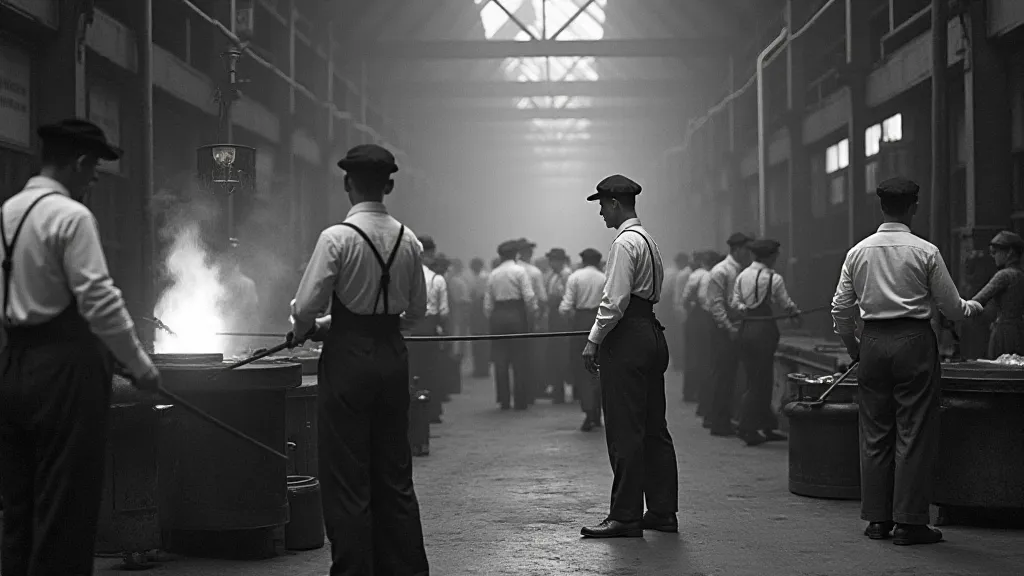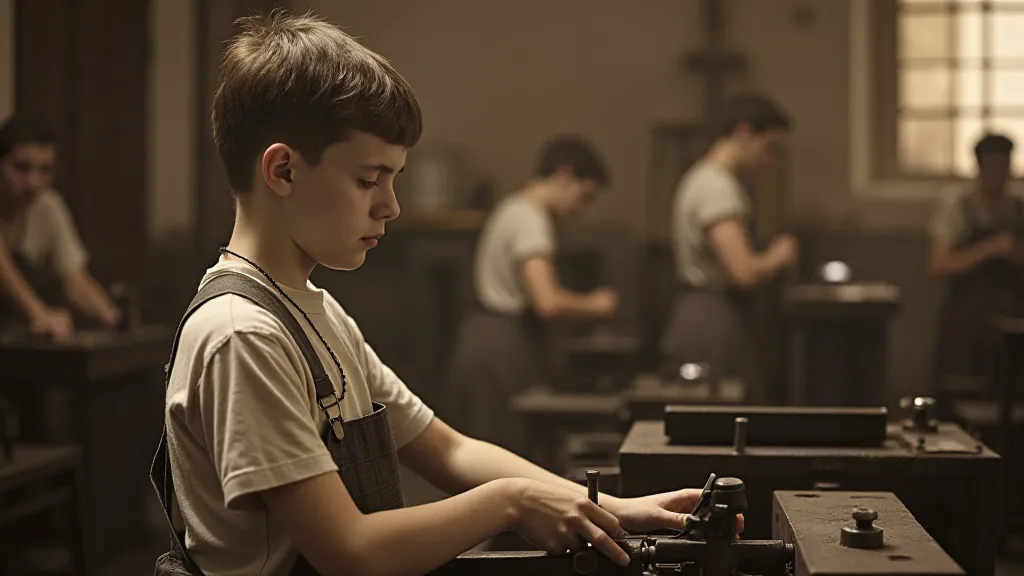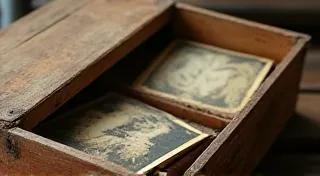Echoes of the Factory Floor: The Soundscapes of Antique Marble Production
The quiet clink of a marble rolling between your fingers – a simple pleasure, isn’t it? But consider, for a moment, the journey that marble took to reach your hand. Forget the polished surface and the vibrant color for now. Imagine instead, the roaring din of a 19th-century factory floor, the relentless rhythm of machinery, and the collective hum of human endeavor. This isn't a romantic notion; it’s the reality of antique marble production, a world almost lost to the quietude of our modern lives. For those of us drawn to collecting antique marbles, understanding this auditory history – the 'soundscape' of the factory – deepens our appreciation for these small treasures.
My own fascination began not with a visual discovery, but with a story my grandfather used to tell. He's a retired machinist, and he remembered his uncle, a worker at the Christensen Marble Company in Akron, Ohio. He spoke of the sheer volume – the deafening clatter of the cutting machines, the hiss of the furnaces, the constant scrape of files against glass. It wasn’t a pleasant environment, he admitted, but there was a sense of pride, a feeling of contributing to something tangible, something that brought joy to children. This memory wasn’t just about the work; it was about a community, a shared experience bound together by the sound of creation.

The Mechanics of the Melody: From Furnace to Finished Marble
The soundscape varied considerably depending on the type of marble being produced. Early marbles, often made of clay or stone, were fashioned by hand, resulting in a quieter, more individualized soundscape. The rhythmic tapping of hammers, the rasp of tools – these were the dominant sounds. Later, as technology advanced, the soundscape transformed. The introduction of glass marbles – particularly those manufactured in the mid-19th century – brought with it a new level of mechanical complexity and, consequently, increased noise.
The process began with raw materials. For glass marbles, this meant sand, soda ash, and limestone, all heated in enormous furnaces. The roar of these furnaces was a constant, pervasive presence. The chemical composition of these raw materials, and the resulting qualities of the finished marble, are fascinating subjects in themselves, a complex interplay of mineralogy and artistry. For those interested in exploring the science behind these vibrant spheres, further research into the intricate mineralogy of antique glass marbles is highly recommended. Once molten, the glass was gathered onto a pontil rod (a metal rod used to hold the glass). The rhythmic *thud* of the glass hitting the rod and the following manipulation – stretching, shaping, and cutting – created a unique percussive rhythm. The cutting machines, some powered by steam engines, were notoriously loud. They whirred, chattered, and sometimes shuddered, producing a cacophony that workers would have grown accustomed to – yet remained a source of immense physical strain.
Stripers, those beautiful swirls found on many antique glass marbles, were created by applying hot glass threads to the surface of the sphere. The crackling and popping sounds of the hot glass fusing were another component of the factory’s auditory profile. The distinctive "clink" we associate with marbles today often began with the initial striking of the glass to release it from the mold or the pontil rod. The creation of these swirls wasn’t simply a matter of applying hot glass; it represented a high level of skill and artistry, influencing the colors and patterns that emerged. The resultant range of hues and unique visual characteristics stemmed from a delicate balance of heat, technique, and naturally occurring elements. This artistic process and how they manipulate materials to achieve specific color shifts is something to be appreciated, akin to understanding the secrets behind the vibrant colors of sulphur marbles.
Beyond the Bang: The Human Element
It wasn't just the machines that defined the soundscape. The chatter of the workers – men, women, and often children – filled the air. These were often immigrant communities, working long hours for meager wages. Their conversations, songs, and laughter mingled with the industrial noise, creating a surprisingly vibrant and communal atmosphere, despite the hardships.
Accounts from the period frequently mention the constant need to shout to be heard over the machinery. Communication was difficult, yet it fostered a sense of interdependence and camaraderie. Supervisors, armed with whistles and stern voices, added to the din, issuing commands and ensuring production targets were met. The sounds of the factory weren't just industrial; they were deeply human, reflecting the lives and experiences of those who worked within its walls.

The Silence of the Collection: Reverberations of the Past
Holding an antique marble today, it's almost impossible to fully grasp the industrial symphony that preceded its creation. Yet, by appreciating the sonic environment of these factories, we gain a new layer of understanding and respect for these small objects. The imperfections, the slight variations in color and shape – these aren't simply flaws; they're echoes of the human hand and the unpredictable nature of the manufacturing process. The artistry involved in creating these marbles extended beyond the technical aspects; it was an effort encompassing design, pattern creation, and the very stories they wanted to tell with each piece. Those skilled artisans often created elaborate designs that would become recognizable signatures of their work. Their work represented more than a manufacturing output; it was a form of artistic expression. The way they communicated design elements is also worth understanding, akin to understanding the complexities behind the creation of hand-decorated marbles.
Restoring antique marbles, a pursuit many collectors undertake, further emphasizes this connection. The careful cleaning, the gentle polishing – these aren't just about restoring visual appeal; they’re about revealing the stories etched into the glass, the lingering vibrations of the factory floor.
A Legacy of Sound and Glass
Many marble factories ceased operations decades ago, their sounds replaced by the silence of abandoned buildings or the bustle of modern development. But the memory of those factories lives on – in the antique marbles we collect, in the stories passed down through generations, and in the enduring appreciation for the craftsmanship and ingenuity of those who shaped these small treasures. The value of these artifacts extends far beyond their monetary worth. It is about recognizing the dedication, skills and efforts of the individuals that shaped them, and understanding the history they represent. They represent more than just objects; they are emotional symbols of a bygone era, possessing the power to evoke nostalgia and connect us to the past. The sense of value attached to these marble collections, extending beyond mere monetary consideration, relates deeply to the emotional connection they foster—a feeling that resonates with broader themes of memory and sentiment. This deep connection with the past, and the emotional weight they carry, is a phenomenon which ties into wider questions of historical preservation and cultural heritage – a concept which also extends to the emotional significance attached to collectable items, and the factors that determine their value. The broader significance of these artifacts also ties into the factors which determine how people ascribe value to them, and what makes collectables so appealing. The complexities surrounding the emotional value of marbles, and how rarity influences that value, represents a truly fascinating topic of study.
Listen closely when you hold a marble in your hand. Can you hear it? The faintest whisper of a long-lost factory floor, a testament to the enduring legacy of sound and glass.






